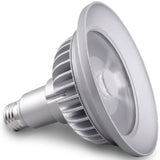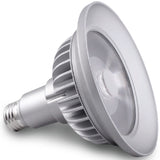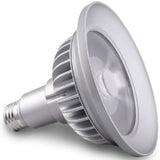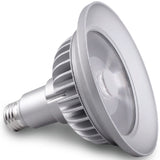Why Install LED Lighting in Institutional and Commercial Operations?
Posted by Dave on for ProLampSales

If you are a business or institution and are not yet using LED light fixtures and bulbs in your operation, you should be. At the very least you should be installing sample product to evaluate it. In 2020 we are at generation 5 and 6 of LED product and the technology is well on it's way to being the dominant light source for buildings.
Lower LED Prices
Eight years ago, the primary reasons that make LED a compelling choice were the same as today - lower energy and maintenance costs. The difference, the cost of product has declined. As demand slowly increased, production volumes did the same and the per-unit cost tumbled. The price of LED light bulbs has dropped more than 85 percent in the last 10 years. The price of LED fixtures has also dropped.
With lower prices, LED should be on the list whenever bulb replacement is needed or lighting retrofits are being considered.
LED Benefits for Business and Commercial Applications
Let's review the benefits of LED for commercial and institutional applications.
LED light bulbs, arrays of light emitting diodes in common light bulb shapes, provide increased energy efficiency and longer life compared to incandescent, halogen and most fluorescent and HID light bulbs. LED bulbs and LED fixtures have additional advantages including:
- LED bulbs save on maintenance costs. “Ladder time” is reduced by 15 to 30 bulb changes with LEDs compared to incandescent or halogen, and 3 to 5 bulb changes compared to most fluorescent and HID. For big box retail buildings, gymnasiums and other buildings with very high ceiling lighting, it also reduces the cost of special equipment to make the bulb change. In the case of some LED fixtures, the LED light source is rated to last the life of the fixture, virtually eliminating ladder time until a new fixture needs to be installed - usually many years in the future.
- LED bulbs save 75% to 80% on energy costs when substituting LEDs for incandescent or halogen bulbs. LEDs save at least 50% on energy when replacing fluorescent and metal halide.
- LED bulbs illuminate at full output instantly when turned on. This can be a significant advantage in some applications when replacing metal halide.
- LEDs can improve the quality of light in spaces compared to existing sources. Don't think CFL when imagining the illumination impact of another low energy light source. LED, a solid state technology, can offer many more options in color temperature, color rendering and the perceived quality of the illumination when compared to most existing light sources.
- LED performance and life expectancy is not affected by frequent or even rapid on-off cycling.
- LEDs are very resistant to mechanical failure due to shock and vibration.
- LED performance is unaffected and even improves in cold temperatures.
- LED light bulbs produce minimal ultraviolet and infrared radiation.
- LED bulbs contain no mercury. In some municipalities, this means old LEDs can be disposed of as ordinary trash rather than requiring special treatment.
Time for an LED Upgrade
For all of these reasons LED lighting can be an upgrade, both for the bottom line and for the quality of light, for almost any existing light source.
Ultimately the decision for most commercial applications comes down to ROI. When ladder time and energy savings are included in the calculation, the result can be very attractive. It is true, simply replacing an existing bulb with the same one, will be a less expensive initial cost (although LED prices are getting very close to some traditional light sources). The savings come over time with mounting energy cost savings and far lower maintenance costs because of fewer bulb changes.
An added benefit is the fact that fluorescent and HID replacement LED's are available in 'plug and play' versions (eg. remove the old T8 fluorescent and replace with a new T8 LED that operates off the existing ballast) make the installation quick and easy - no electrician required.
Featured Products (View All)
0 comment




